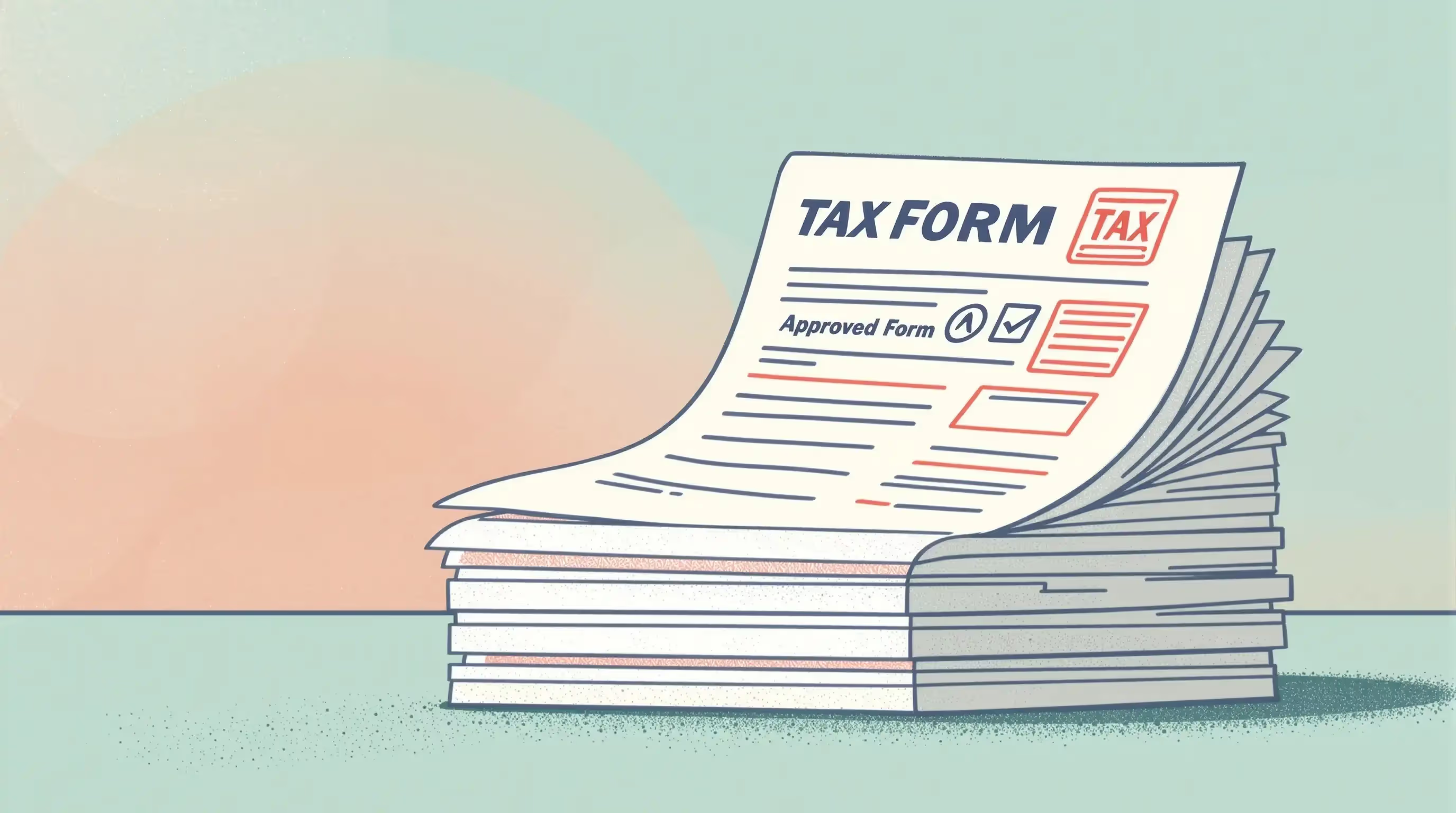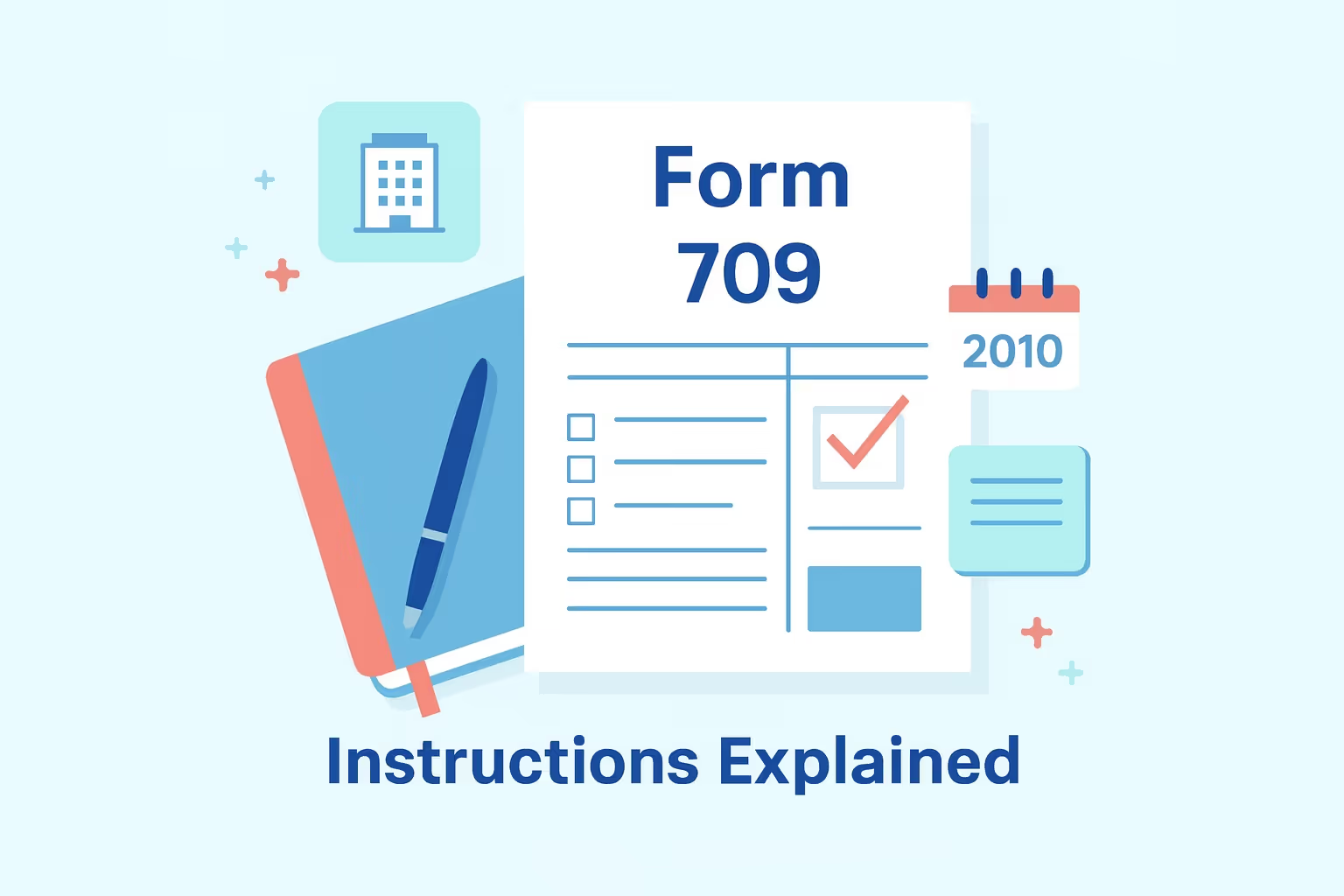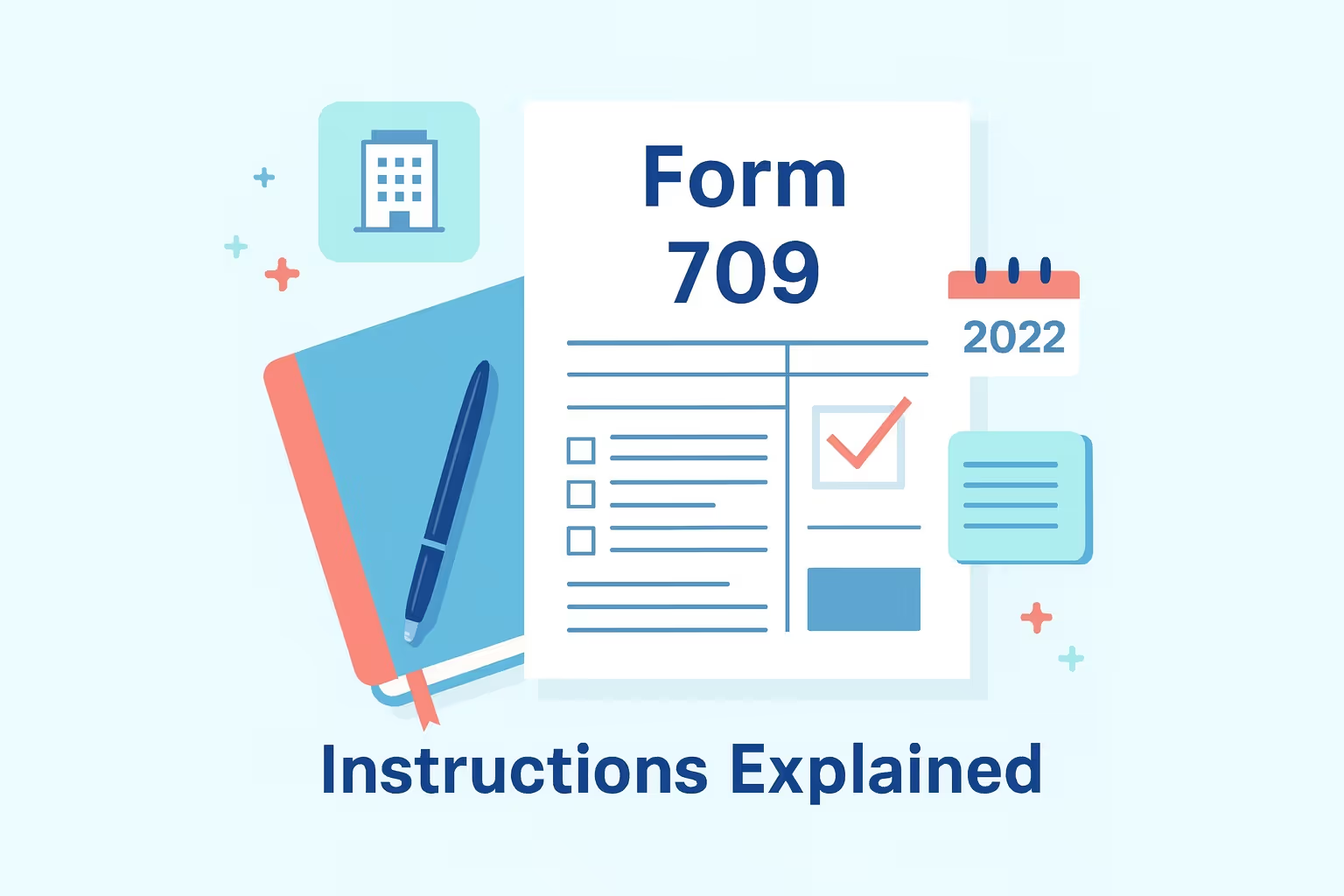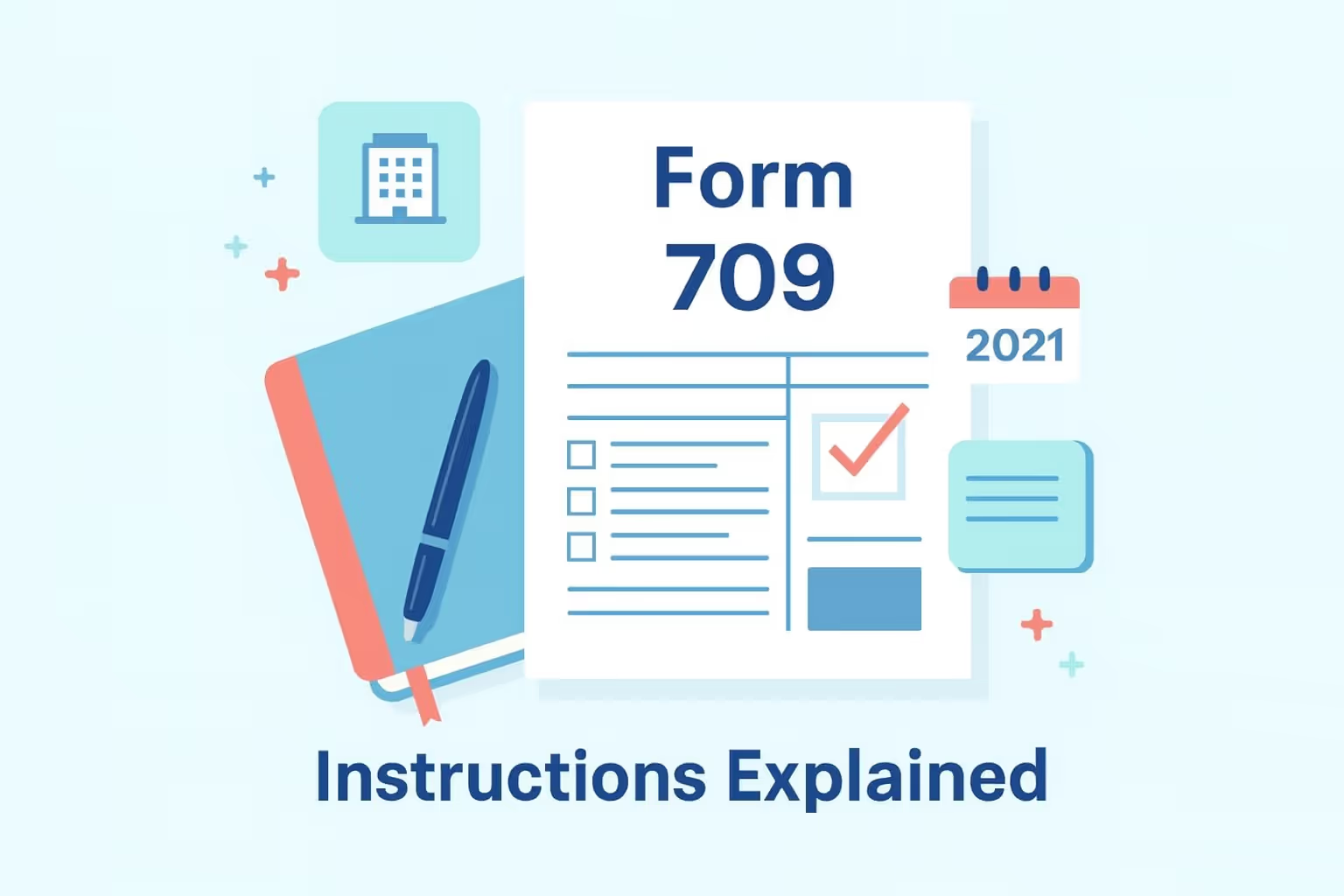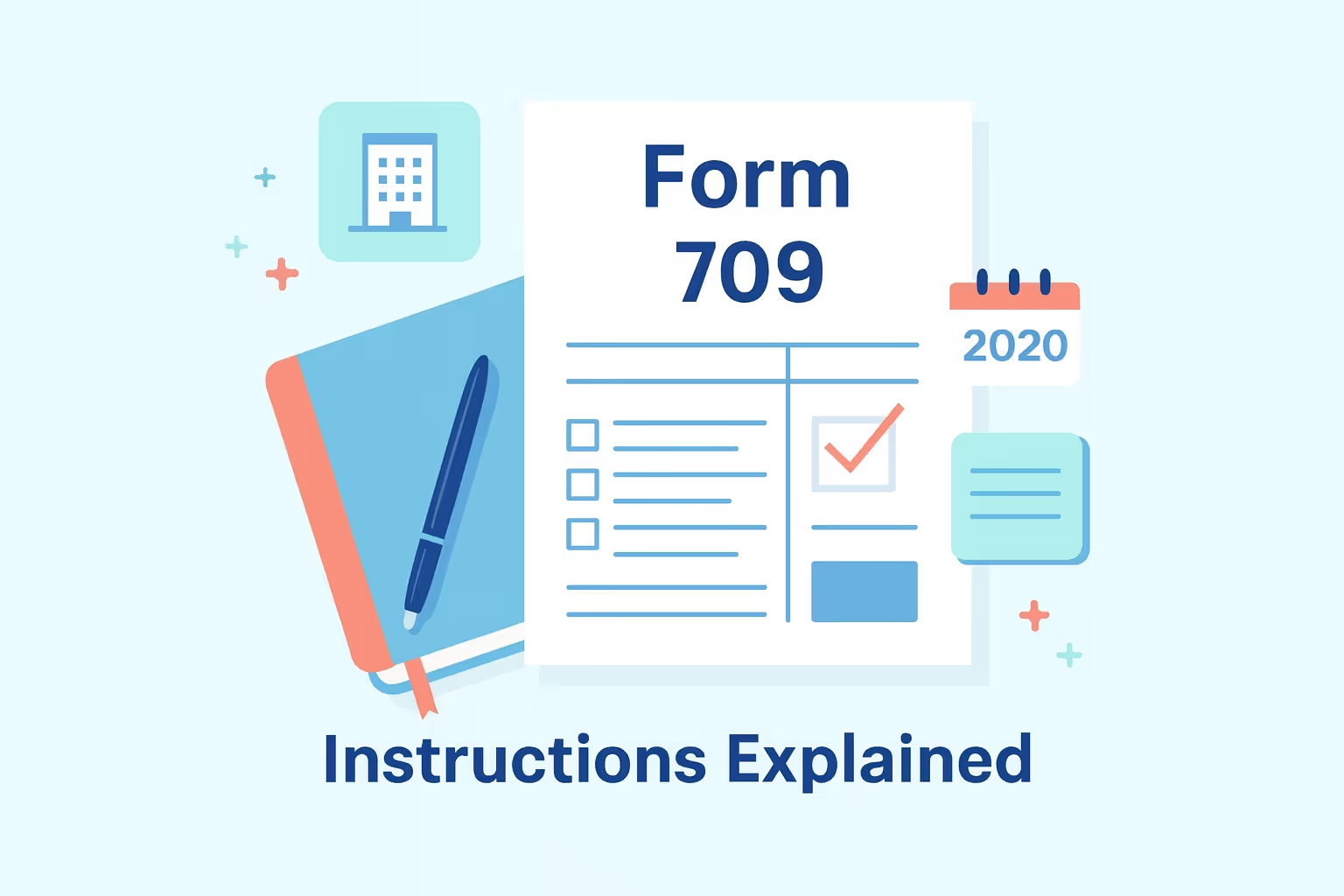How do you file IRS Form 709 for the 2011 Gift Tax Return?
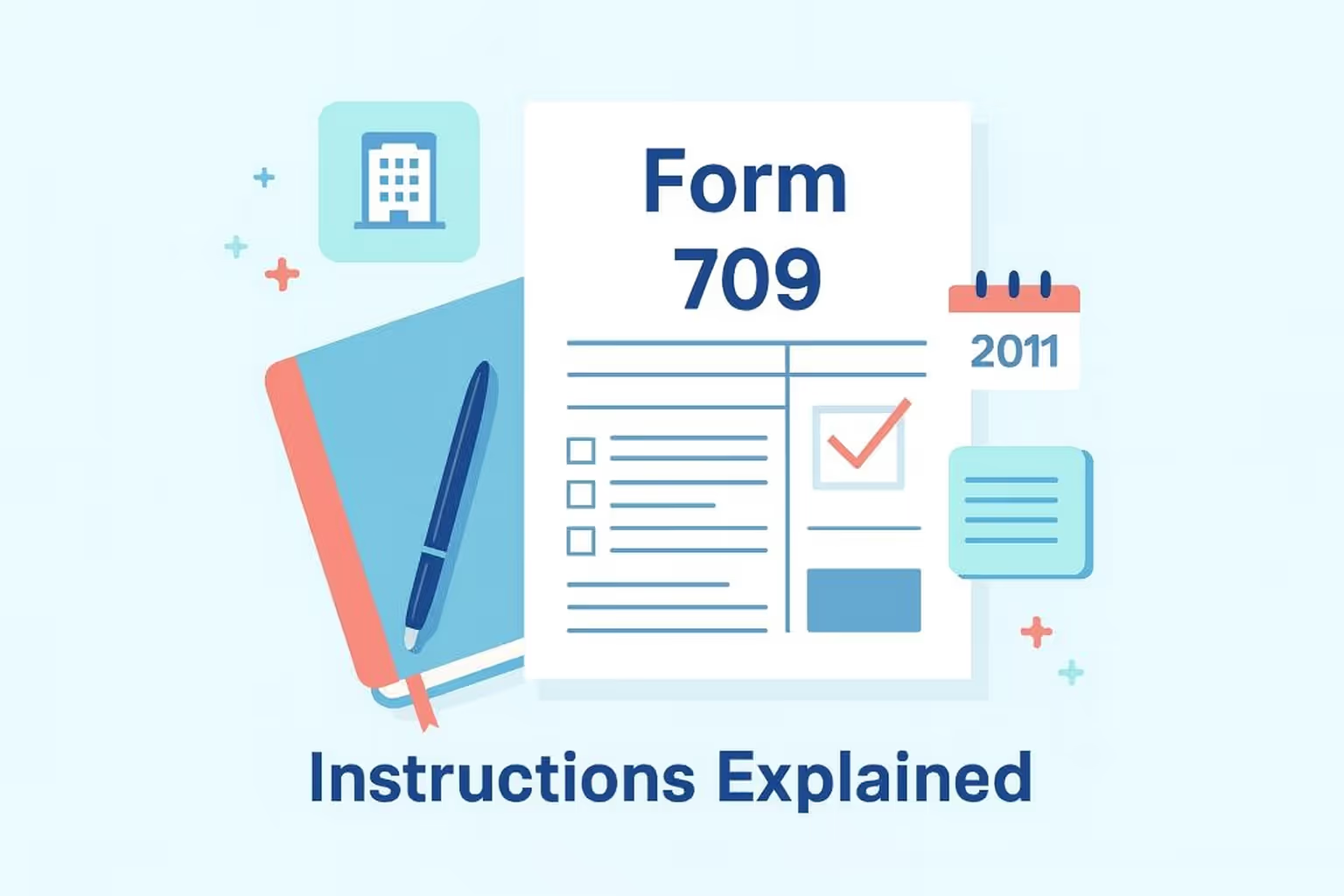
Filing a federal gift tax return can seem confusing for many taxpayers, especially when navigating older rules such as those from tax year 2011. The Internal Revenue Service requires individuals to use Form 709 to report certain gifts and transfers that may affect their overall estate and gift tax obligations. While many people associate tax filing primarily with federal income tax, the gift tax is a separate system designed to track large or unusual transfers of money or property during a person’s lifetime.
Form 709 for 2011 carried unique requirements due to temporary changes introduced under the tax laws at that time. The lifetime gift tax exemption was significantly increased, and the maximum gift tax rate was reduced, creating a favorable environment for sizable gifts. The annual gift tax exclusion also remained in place, meaning that most small gifts could be made tax-free; however, larger or specific gifts still needed to be reported for tax purposes. This filing ensured accurate tracking of how much of the lifetime limit had been used and helped determine potential future tax liability.
For individuals unsure of whether gift tax applies to their situation, the instructions for Form 709 provide detailed guidance on reporting, required attachments, and exceptions. Because the rules surrounding estate and gift taxes can be complex, many taxpayers benefit from reviewing the official Form 709 2011 instructions or consulting a qualified tax professional. This introduction serves as a starting point for understanding when and how to file gift tax returns for that year.
What is IRS Form 709?
IRS Form 709, officially titled the United States Gift (and Generation-Skipping Transfer) Tax Return, is the federal form individuals use to report certain gifts made during a calendar year. It ensures compliance with the gift tax system and helps track the lifetime gift tax exemption available to each taxpayer. Unlike federal income tax, which applies to earnings, the gift tax applies to transfers of money, property, or other assets given without full consideration in return.
Who Must File Form 709?
A person is required to file gift tax returns if any of the following apply:
- The person gave gifts to a single recipient exceeding the annual exclusion amount for 2011, which was $13,000.
- The person made gifts of future interests, such as transfers where the recipient cannot immediately use or enjoy the gift.
- The person and a spouse elected to split gifts, which allows a married couple to treat a gift as though each provided half.
- The person transferred community property to another individual.
Exceptions to Filing Requirements
Not all gifts require a federal gift tax return. Filing is not required if:
- The total amount of gifts made to each individual in 2011 did not exceed the annual exclusion.
- Gifts were made only to a spouse who is a U.S. citizen or national.
- Payments were made directly to educational institutions or medical care providers for qualifying expenses.
- Contributions were given to qualifying charities or a political organization.
Form 709 serves as both a reporting tool and a historical record for gift and estate taxes. It allows the Internal Revenue Service to track lifetime gifts and ensures that the estate tax exemption is calculated correctly when an estate is settled.
Key Changes for the 2011 Tax Year
The 2011 tax year introduced several significant adjustments that significantly impacted how taxpayers approached their federal gift tax obligations. These changes created opportunities for making sizable gifts while reducing potential tax liability compared to prior years.
Lifetime Exemption and Tax Rates
- The lifetime exemption amount increased to $5 million, allowing individuals to give away more during their lifetime without owing gift tax.
- The maximum gift tax rate was reduced to 35 percent, down from 55 percent in earlier years.
- The unified credit was raised to $1,730,800, offsetting the tax owed on lifetime gifts up to the exemption limit.
Other Notable Updates
- A new portability provision was introduced, enabling a surviving spouse to use any unused portion of the deceased spouse’s exemption.
- The annual exclusion amount remained $13,000 per recipient, and for gifts to noncitizen spouses, the annual limit was $136,000.
- The due date for filing Form 709 for the 2011 tax year was extended to April 17, 2012, because of a Washington, D.C. holiday.
These updates made 2011 a favorable year for individuals considering large property or financial transfers. The changes also underscored the need for careful planning, as the combination of lower tax rates and higher exemptions significantly affected how gift and estate tax strategies were applied.
Preparing to File Form 709
Before completing Form 709, taxpayers must gather accurate personal and financial details. Proper preparation ensures that the Internal Revenue Service receives a complete record and reduces the chance of errors that could delay processing.
Personal Information Checklist
- Provide a Social Security Number, current address, and legal residence.
- Include citizenship status to confirm filing eligibility.
- Add spousal information if filing separately or electing to split gifts.
Gift Information Checklist
- Collect names and addresses of all gift recipients.
- Record the relationship to each person receiving a gift.
- Document the description, date, and fair market value of each gift.
- Retain appraisals for property worth more than $5,000.
- Maintain records of the original cost basis for property transfers to ensure accurate tax reporting.
Thorough record-keeping is essential because Form 709 requires adequate disclosure of specific gifts to limit the IRS's ability to challenge valuations. Careful preparation supports compliance and helps taxpayers apply the annual exclusion amount and lifetime gift tax exemption correctly.
Step-by-Step Filing Instructions
Filing Form 709 involves completing multiple sections that record general information, list gifts, and calculate any resulting tax liability. Each part of the form serves a specific purpose in tracking taxable gifts and applying available exclusions.
Part 1 – General Information
- Enter your personal details, including name, address, Social Security Number, and citizenship status.
- Indicate if Form 709 has been filed in prior years.
- Use this section to elect gift splitting when applicable, ensuring both spouses file a separate return.
Schedule A – Computation of Taxable Gifts
- Part 1 is for standard gifts subject only to gift tax, such as cash or property transfers.
- Part 2 records direct skips, including gifts made directly to grandchildren or other skip persons.
- Part 3 reports indirect skips, such as transfers into trusts that may later be subject to the generation-skipping transfer tax.
- Part 4 reconciles taxable gifts after applying the annual exclusion and deductions.
Schedule B – Prior Period Gifts
- Complete this section only if prior gift tax returns were filed.
- Recalculate credits from earlier years using the 2011 rates to reflect current rules.
Schedule C – Generation-Skipping Transfer Tax
- Use this section if any gifts were subject to GST rules.
- Report allocations of the GST exemption, which in 2011 matched the $5 million lifetime limit.
Completing each section carefully ensures accurate reporting and allows the IRS to track how much of the lifetime exemption has been used. For complicated transfers or large estates, consulting a tax professional can help avoid mistakes and reduce the risk of additional tax liability.
How to File Form 709?
For the 2011 tax year, Form 709 could only be filed on paper. Taxpayers had to ensure that all documents were completed, signed, and mailed to the proper Internal Revenue Service address by the extended due date.
Filing Process
- Download the correct version of Form 709 and its instructions for Form 709 from the IRS website.
- Complete all required sections, including schedules and attachments.
- Sign the return, and if gift splitting is elected, ensure the spouse also signs on the designated line.
- Keep a copy for personal records before mailing.
Mailing Instructions
- Send completed returns to the IRS processing center in Cincinnati, Ohio.
- If filing with a spouse, mail both separate returns in the same envelope for easier processing.
- Taxpayers can designate a third party to discuss their return with the IRS by providing the third party's name, phone number, and PIN in the selected section.
Paper filing requires attention to detail. Missing signatures or attachments may result in processing delays or correspondence from the IRS. Ensuring accuracy before mailing reduces the risk of errors and supports timely acceptance of the return.
Calculating Gift Tax and Payments
Form 709 requires taxpayers to calculate taxable gifts and determine whether any federal gift tax is owed. In most cases for 2011, the high lifetime exemption meant that no tax liability applied, but correct calculations were still required.
Tax Computation Process
- Add the total amount of taxable gifts from Schedule A.
- Subtract the annual exclusion amount for each qualifying gift.
- Apply marital and charitable deductions when allowed.
- Use the tax rate table for 2011 to calculate the tentative tax.
- Subtract prior years’ taxable gifts and credits to determine the current tax owed.
- Apply the lifetime exemption amount to offset any remaining liability.
Payment Instructions
- If any tax remains, make checks payable to the United States Treasury.
- Include the Social Security Number, the tax year, and Form 709 on the memo line.
- File Form 8892 if an extension is needed, but remember that extensions do not delay payment obligations.
Accurate calculations ensure compliance with federal gift tax requirements and help avoid interest or penalties. Using professional assistance can be helpful when dealing with sizable gifts or complicated estate and gift tax planning.
Required Schedules and Attachments
Supporting schedules and documents are essential to a complete federal gift tax return. Without the proper attachments, a taxpayer risks an incomplete filing, IRS challenges, or an extended statute of limitations.
Commonly Required Schedules
- Schedule A, Parts 1 through 4, for reporting standard gifts, direct skips, indirect skips, and reconciliations.
- Schedule B for prior years’ gifts if earlier returns were filed.
- Schedule C if gifts were subject to the generation-skipping transfer tax.
Attachments and Documentation
- Appraisals are required for non-cash property valued at $5,000 or more.
- Trust documents must be included if gifts were made to a trust.
- Statements must be provided for special elections, such as Section 529 plan contributions or QTIP property.
- Documentation supporting valuation discounts or qualified disclaimers must be attached.
Filing with proper schedules and attachments ensures that all gifts are reported accurately for tax purposes. It also provides adequate disclosure, which starts the statute of limitations on IRS review and protects taxpayers from indefinite challenges on reported gifts.
Common Mistakes to Avoid
Filing Form 709 can be complex, and minor errors may cause delays, added correspondence, or even tax penalties. Understanding common mistakes helps taxpayers file gift tax returns correctly and avoid unnecessary complications.
Frequent Errors
- Misreporting the annual exclusion amount or misapplying it to specific gifts.
- Attempting to file a joint gift tax return with a spouse instead of filing separate returns.
- Forgetting to include required appraisals for property gifts valued above $5,000.
- Leaving out signatures, either the taxpayer’s or the spouse’s, when gift splitting is elected.
- Failing to recalculate prior years’ credits using 2011 rates as required.
How to Prevent Mistakes?
- Use checklists when preparing documents to ensure no attachments or schedules are missed.
- Verify all gift valuations with appraisals or accurate fair market value documentation.
- Review deadlines carefully, since late filing results in penalties even when no tax is owed.
- Consult a tax professional when uncertain about complicated transfers or valuation methods.
Avoiding these errors makes the filing process more efficient and provides peace of mind that the Internal Revenue Service has a complete and accurate record of lifetime gifts.
Zero Activity / Dormant Year Guidance
Not every taxpayer is required to file Form 709 each year. When no reportable gifts are made, filing may not be necessary, but maintaining accurate records remains essential for tax purposes.
When Filing Is Not Required
- All gifts given in the year were below the annual exclusion amount.
- Only gifts to a spouse who is a U.S. citizen were made.
- Payments went directly to educational institutions or for the medical care of another person.
- Gifts were given exclusively to qualifying charities or a political organization.
Protective Filing Situations
- Filing may still be helpful when electing to split gifts with a spouse.
- Filing initiates the statute of limitations for valuing hard-to-value property.
- Filing allows for the allocation of the generation-skipping transfer exemption, even when no tax is due.
Even in years when no filing is required, taxpayers should maintain complete records of gifts, fair market values, and recipient information. Proper documentation helps protect against future disputes and supports accurate estate and gift tax reporting.
First-Time Filer Tips
Completing Form 709 for the first time can feel overwhelming, but preparation and a transparent process make it manageable. First-time filers benefit from understanding terminology and organizing documentation early.
Helpful Steps
- Learn standard terms, such as taxable gift, annual exclusion, and lifetime exemption, to better understand the instructions for Form 709.
- Organize records of gifts, including the value, supporting documents, and the date of the gift.
- Decide whether to elect gift splitting as a married couple, and understand that both spouses must file a separate return.
- Review all prior years’ filing, if any, since those amounts affect the current return.
Additional Considerations
- Seek professional assistance when dealing with extensive estate planning or complicated property valuations.
- Make complete copies of the return and attachments before mailing.
- Ensure all required signatures and appraisals are included.
By taking a systematic approach and using available resources, a first-time filer can complete Form 709 with confidence. Proper filing ensures compliance with federal gift tax rules and facilitates the accurate tracking of lifetime gifts and estate planning strategies.
Frequently Asked Questions
Do I need to file Form 709 if my gifts exceeded the annual exclusion in 2011?
Yes, for the 2011 tax year, the annual gift tax exclusion was $13,000 per recipient. If a person gave more than this amount to any individual, a federal gift tax return was required even if no tax liability applied. Filing ensures the Internal Revenue Service can track lifetime gifts and use the lifetime gift tax exemption correctly for estate and gift tax purposes.
Can my spouse and I submit one joint gift tax return?
No, a joint gift tax return is not permitted. Each married couple must file a separate return when electing to split gifts. Both spouses report the same gifts, and each files Form 709 individually. Mailing both returns in the same envelope helps the IRS process them together. Filing separately ensures the correct use of the annual exclusion amount and lifetime exemption.
Are tuition and medical payments considered taxable gifts?
Sure gifts, such as direct payments to educational institutions for tuition or to healthcare providers for medical care, are considered tax-free. These amounts do not count against the annual exclusion and do not require reporting on Form 709. For gift tax purposes, only gifts given directly to individuals, rather than to schools or hospitals, reduce the lifetime limit or create a taxable gift.
How does the lifetime gift tax exemption interact with the estate tax?
The lifetime gift tax exemption in 2011 was $5 million. Any portion used for lifetime gifts reduces the estate tax exemption available at the time of death. This coordination ensures the estate and gift tax systems work together to track the total amount transferred during life and at death. For considerable estate planning, consulting a tax professional can help avoid unexpected tax liability and preserve the lifetime estate exemption.
What if I file Form 709 after the extended due date?
If Form 709 is filed after the extended due date, the taxpayer may face penalties and interest, even when no gift tax liability applies. The IRS expects timely filing to record taxable gifts and maintain accurate records of lifetime gifts. Filing late does not eliminate the need to report the information. Taxpayers should file as soon as possible and may benefit from professional assistance if prior years were missed.
Do I need appraisals when reporting property gifts?
Yes, for 2011, if the fair market value of a property gift exceeded $5,000, a qualified appraisal was required. This applied to property such as real estate, closely held stock, or other assets without a readily available market price. Proper documentation supports accurate gift tax return reporting and protects the taxpayer under adequate disclosure rules. This requirement applies to specific gifts to ensure valuations are accepted for tax purposes.







